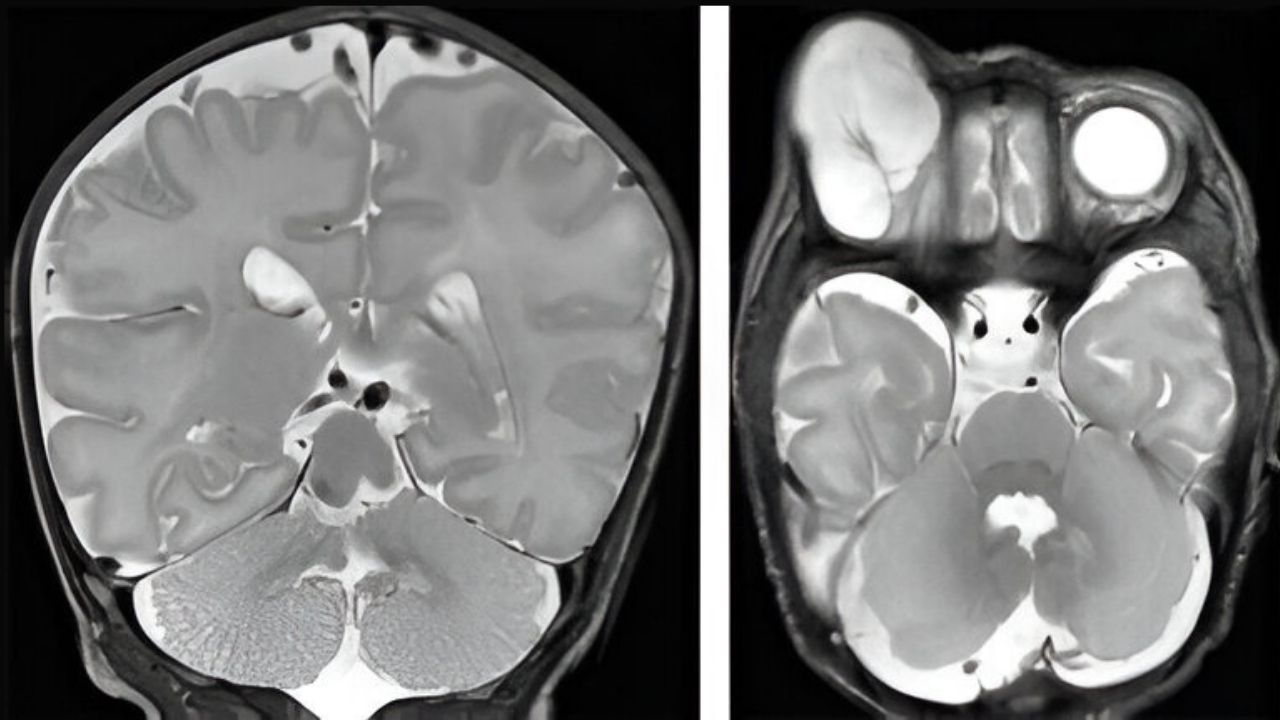
Oculo Cerebro Acral Syndrome is a rare genetic disorder that affects multiple parts of the body, including the eyes, brain, and limbs. Caused by mutations in the POMT1 gene, this condition can lead to a variety of symptoms such as intellectual disability, vision problems, and limb abnormalities. Understanding Oculo Cerebro Acral Syndrome is crucial for those affected and their families, as it helps in managing the condition and improving quality of life. In this blog post, we will explore 25 interesting facts about this syndrome, shedding light on its causes, symptoms, and potential treatments. Whether you're a medical professional, a caregiver, or someone seeking knowledge, these facts will provide valuable insights into this complex disorder.
Key Takeaways:
- Oculo Cerebro Acral Syndrome (OCAS) is a rare genetic disorder affecting the eyes, brain, and limbs, leading to developmental delays and physical abnormalities. Early recognition and support are crucial for managing symptoms and improving quality of life.
- While there is no cure for OCAS, treatments such as surgery, medication, and therapy can help manage symptoms and enhance daily living. Support groups, adaptive devices, and community resources play a vital role in providing emotional and practical support for affected individuals and their families.
What is Oculo Cerebro Acral Syndrome?
Oculo Cerebro Acral Syndrome (OCAS) is a rare genetic disorder that affects multiple parts of the body. This condition is characterized by abnormalities in the eyes, brain, and limbs. Understanding OCAS can help in managing the symptoms and improving the quality of life for those affected.
-
OCAS is extremely rare: Only a handful of cases have been reported worldwide, making it one of the rarest genetic disorders.
-
Genetic origin: OCAS is caused by mutations in specific genes that are inherited in an autosomal recessive pattern.
-
Eye abnormalities: Individuals with OCAS often have severe eye issues, including cataracts and microphthalmia (abnormally small eyes).
-
Brain malformations: The syndrome can lead to structural brain abnormalities, which may result in developmental delays and intellectual disabilities.
-
Limb deformities: Affected individuals may have limb abnormalities such as clinodactyly (curved fingers) and syndactyly (webbed fingers or toes).
Symptoms and Diagnosis
Recognizing the symptoms early can lead to a more accurate diagnosis and better management of OCAS. Here are some key symptoms and diagnostic methods.
-
Developmental delays: Children with OCAS often experience delays in reaching developmental milestones like walking and talking.
-
Seizures: Many individuals with OCAS suffer from seizures, which can vary in severity and frequency.
-
Facial dysmorphism: Distinctive facial features, such as a broad nasal bridge and a high forehead, are common in OCAS patients.
-
Hearing loss: Some individuals may experience hearing impairments, which can further complicate communication and learning.
-
MRI scans: Magnetic Resonance Imaging (MRI) is often used to detect brain abnormalities associated with OCAS.
-
Genetic testing: Confirming the diagnosis usually involves genetic testing to identify specific gene mutations.
Treatment and Management
While there is no cure for OCAS, various treatments can help manage the symptoms and improve quality of life.
-
Surgical interventions: Surgery may be required to correct limb deformities or eye abnormalities.
-
Antiepileptic drugs: Medications can help control seizures, improving the overall well-being of the patient.
-
Physical therapy: Regular physical therapy can aid in improving mobility and muscle strength.
-
Speech therapy: Speech therapy can be beneficial for those with developmental delays affecting communication.
-
Special education: Tailored educational programs can help children with OCAS reach their full potential.
-
Regular monitoring: Continuous medical supervision is essential to manage the various symptoms effectively.
Living with Oculo Cerebro Acral Syndrome
Living with OCAS presents unique challenges, but understanding and support can make a significant difference.
-
Support groups: Joining support groups can provide emotional and practical support for families dealing with OCAS.
-
Adaptive devices: Using adaptive devices like hearing aids and mobility aids can enhance daily living.
-
Nutritional support: A balanced diet and nutritional supplements may be necessary to address specific health needs.
-
Mental health care: Psychological support is crucial for both the affected individuals and their families.
-
Community resources: Accessing community resources can provide additional support and services.
-
Awareness and education: Raising awareness about OCAS can lead to better understanding and support from the broader community.
-
Research and advancements: Ongoing research is essential for developing better treatments and potentially finding a cure.
-
Family planning: Genetic counseling can help families understand the risks and make informed decisions about future pregnancies.
Final Thoughts on Oculo Cerebro Acral Syndrome
Oculo Cerebro Acral Syndrome (OCAS) is a rare genetic disorder affecting multiple body systems. Understanding its symptoms, causes, and treatment options can help those affected manage the condition better. Symptoms often include eye abnormalities, intellectual disabilities, and limb deformities. Genetic mutations, particularly in the PAX6 gene, play a significant role in OCAS. Early diagnosis and intervention can improve quality of life for patients.
Treatment usually involves a multidisciplinary approach, including ophthalmologists, neurologists, and orthopedic specialists. While there's no cure, therapies and surgeries can alleviate some symptoms. Support groups and counseling can also provide emotional and psychological support for families.
Raising awareness about OCAS is crucial for early detection and better management. By sharing information and supporting research, we can hope for advancements in treatment and possibly a cure in the future. Stay informed, stay supportive, and let's make a difference together.
Frequently Asked Questions
Was this page helpful?
Our commitment to delivering trustworthy and engaging content is at the heart of what we do. Each fact on our site is contributed by real users like you, bringing a wealth of diverse insights and information. To ensure the highest standards of accuracy and reliability, our dedicated editors meticulously review each submission. This process guarantees that the facts we share are not only fascinating but also credible. Trust in our commitment to quality and authenticity as you explore and learn with us.
